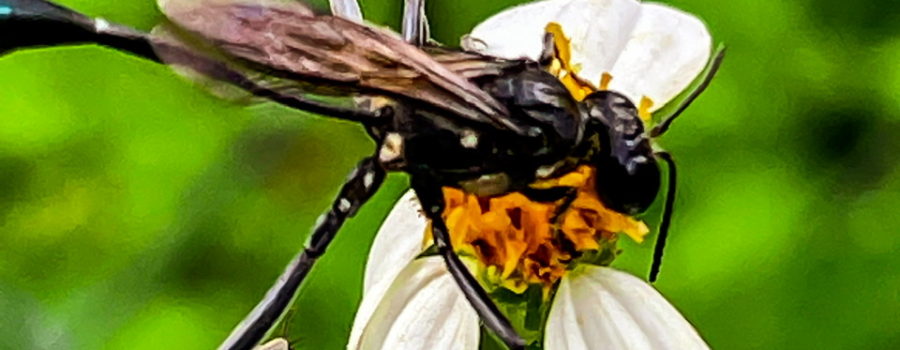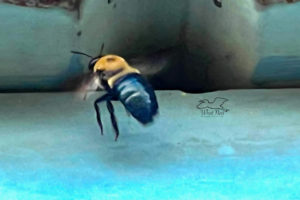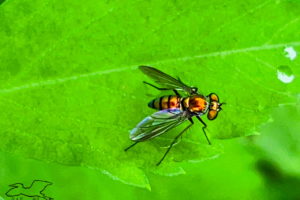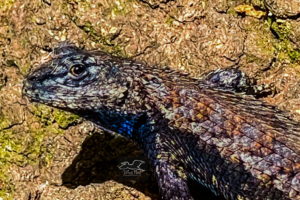The Organ Pipe Mud Dauber is Really Great For Gardens

It’s that time of year here in central Florida where we have wildflowers blooming everywhere. Ever since tropical storm Elsa just after July 4, we’ve been having an unusually wet summer after an unusually dry spring. The dry spring definitely has caused some changes in the flora and fauna we are seeing now. There are a lot fewer butterflies, probably because a lot of the caterpillars didn’t do well during the drought. In place of butterflies as pollinators we’re seeing more bees and wasps. One of the wasps I’m seeing a lot of are the organ pipe (or pipe organ) mud daubers. There are always a few around here because they like to build their mud tube nests on my porches. I do have to admit, when I first moved here they made me kind of nervous because they are very loud (it sounds like a whole swarm of them!) while building their nests. I’m moderately allergic to bees and wasps, and the thought of a whole swarm just outside my door was not appealing. I have since learned that all that buzzing is actually a single wasp, but the tube amplifies the sound.

I have also learned that these are extremely nonaggressive wasps, and in fact, the males don’t even have stingers! They are very proficient pollinators and have an interesting life cycle and lifestyle. All that scary buzzing and carrying on happens when the female is building her nest. The nests are built out of mud mixed with the female’s saliva. Before she chooses her nesting spot the female organ pipe mud dauber looks for three things. She wants a vertical area that is well protected from the elements, especially rain. There needs to be mud readily available for nest building, and there needs to be a wooded area with plenty of wildflowers and plenty of spiders. Once she finds this site, she sets about building her nest tubes. She goes to the mud and using her mandibles she rolls a ball of mud and carries it back to the site. Once there, she hollows out and elongates the mud ball using her head. She may make several trips to the mud to produce once cell.

Once the cell is done, she sets about finding food for her larvae. The preferred food item for them are spiders, especially small, colorful spiders like orb weavers and crab spiders (they do also sometimes also use small beetles and other insect larvae). When they find a spider they grab it with their front legs and sting it, paralyzing it, but not killing it. They fill the cell with these poor, paralyzed spiders, and then lay an egg on top of them. After the egg is laid, the cell is sealed with more mud, and work begins on the next cell. While the female is building the nest and capturing the prey her mate guards the structure to keep out other wasps and parasites. When the female is finished, there are usually 5-6 tubes, one next to the other, that resemble the pipes of a pipe organ. Each pipe contains several cells.

After the eggs are laid, the larvae hatch out within a few days. Then they spend about a week feasting on the poor hapless spiders that have been placed in their cell. Once the food is gone, they spin a silk cocoon and pupate. Depending on the time of year, they may spend the winter as a pupa or they may mature in a week or so and chew their way out of the mud cell to emerge as a new, young mud dauber. I personally love spiders, but I know that many people don’t, so for those of you, like my friend Norma, who love gardening but don’t like spiders, organ pipe mud daubers can be a great friend. The adults are great pollinators, they are very nonaggressive, and they keep spider populations under control. They are most definitely great for gardens and for many gardeners!






Recent Comments